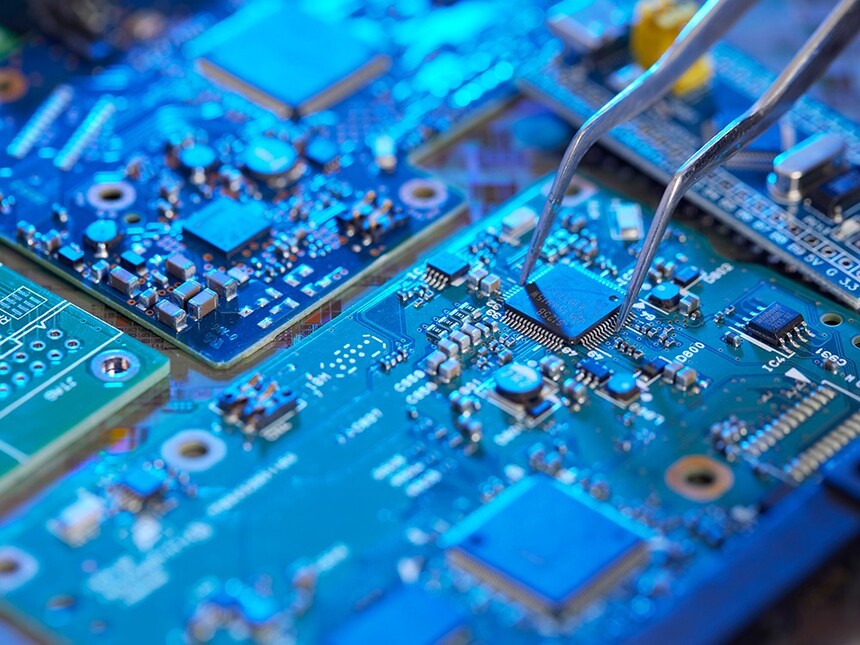|
Types of IC Electronic ComponentsTypes of IC Electronic Components.Integrated circuits (ICs), commonly known as chips, are miniature electronic devices that perform various functions in electronic equipment. They are made up of millions of transistors and other electronic components integrated onto a single silicon chip. ICs play a crucial role in modern electronics, enabling complex circuits and systems to be packaged into small and portable devices.
There are various types of IC electronic components, each designed for specific applications and functions. In this article, we will explore the different types of ICs commonly used in electronics. Microprocessors Microprocessors are the brain of many electronic devices, including computers, smartphones, and tablets. They execute instructions stored in memory, performing arithmetic and logic operations at high speed. Microprocessors are complex ICs that integrate millions of transistors to achieve their computing power. Some well-known microprocessor manufacturers include Intel, AMD, and ARM. Memory Chips Memory chips are used to store data and instructions in electronic devices. There are several types of memory chips, including: RAM (Random Access Memory): RAM is a volatile memory that temporarily stores data and instructions that the CPU needs to access quickly. It is used for running programs and multi-tasking operations. ROM (Read-Only Memory): ROM is a non-volatile memory that permanently stores data and instructions. It is often used to store the firmware or operating system of a device. Flash Memory: Flash memory is a non-volatile memory that can be electrically erased and reprogrammed. It is commonly used in USB drives, memory cards, and solid-state drives (SSDs). Analog ICs Analog ICs are designed to process analog signals, which are continuous signals that can have any value within a specified range. These ICs are widely used in audio and video equipment, amplifiers, sensors, and power management circuits. Some common types of analog ICs include operational amplifiers, comparators, voltage regulators, and analog-to-digital converters. Digital ICs Digital ICs are designed to process digital signals, which represent discrete values such as 0 and 1. These ICs are used in logic circuits, microcontrollers, and other digital systems. Common types of digital ICs include logic gates, flip-flops, decoders, and counters. Interface ICs Interface ICs are used to connect different electronic components or systems. They enable communication and data transfer between various devices, such as microcontrollers, sensors, actuators, and communication interfaces. Some examples of interface ICs include serial communication interfaces (e.g., UART, SPI, I2C), USB controllers, and Ethernet controllers. Power Management ICs Power management ICs (PMICs) are designed to efficiently manage power in electronic devices. They provide various functions such as battery charging, voltage regulation, and power sequencing. PMICs are essential in mobile devices, laptops, and other battery-powered electronics to optimize battery life and ensure stable operation. Amplifier ICs Amplifier ICs are used to increase the amplitude of electrical signals. They are commonly found in audio equipment, radios, and other electronic devices that require signal amplification. Amplifier ICs can be classified into different types, such as operational amplifiers, audio amplifiers, and power amplifiers, depending on their application and specifications. Sensor ICs Sensor ICs are integrated circuits that contain sensors for measuring physical quantities such as temperature, pressure, humidity, acceleration, and light. These ICs convert the measured physical quantity into an electrical signal that can be processed by other electronic components. Sensor ICs are widely used in IoT devices, automotive systems, and industrial automation. Microcontroller Units (MCUs) MCUs are small computers on a single chip that integrate a processor core, memory, and programmable input/output peripherals. They are designed for embedded systems and used in a wide range of applications, including automotive, consumer electronics, and industrial automation. MCUs execute programs stored in their internal memory to control and monitor various devices. FPGA and ASIC Field Programmable Gate Arrays (FPGAs) and Application Specific Integrated Circuits (ASICs) are specialized types of ICs. FPGAs are programmable logic devices that can be configured to perform specific logic functions. ASICs, on the other hand, are custom-designed chips for a specific application and cannot be reprogrammed. Both FPGAs and ASICs are used in high-performance computing, networking, and other specialized applications. In conclusion, integrated circuits (ICs) are the backbone of modern electronics, enabling complex functions and systems to be integrated into small and efficient devices. The different types of IC electronic components discussed in this article play crucial roles in various applications, from computing and communication to sensing and control systems. Understanding the different types of ICs and their applications is essential for designing and developing innovative electronic products. |






